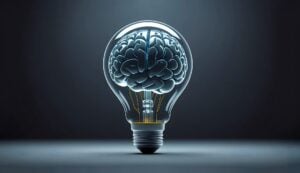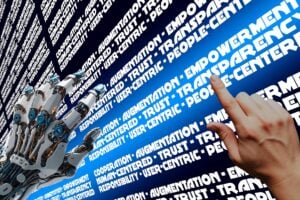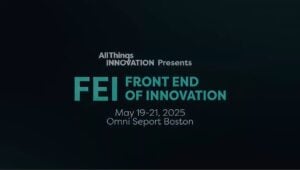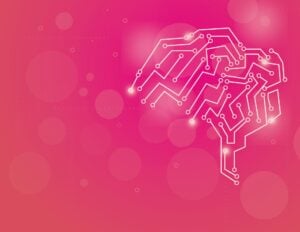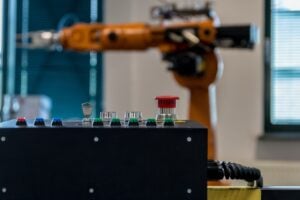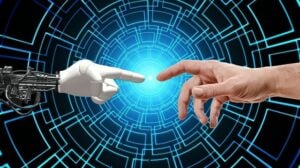Click here for the story, “Moving the Needle on Business Innovation.”
So what special skills and specialized capabilities put some innovation experts ahead of the pack? We asked two thought leaders with diverse backgrounds just what pushes them ahead of the curve and gives them an advantage in the innovation space. Both answers were quite different, one focused on sustainable human-centered innovation and the other focused on artificial intelligence. Yet if there is a common theme it’s that agile, flexible and adaptive approaches can help create the quick wins and incremental steps necessary to achieve innovation.
Sustaining a Human-Centric Approach
For Pete Dulcamara, founder and consultant for Pete Dulcamara & Associates, who is also widely known for his previous diverse research and development roles at Kimberly-Clark, in today’s environment it all comes down to human-centric innovation. This, he feels, is where the rubber meets the road in today’s focus on sustainability and innovation.
Dulcamara defines humanity-centric innovation as a transformative approach that positions sustainability as a driver of competitive advantage, bridging the gap between compliance and mission-driven impact.
To understand this more fully, Dulcamara points to the model of the Sustainability Maturity Curve:
- Level 1: Compliance-Driven Sustainability focuses on adhering to regulations and maintaining a “license to operate.” At this stage, sustainability is often seen as a cost or obligation, with efforts aimed at minimizing risks rather than driving meaningful change. Communication is largely PR-oriented, and the focus is short-term profitability.
- Level 2: Humanity-Centric Innovation shifts the perspective. Here, sustainability becomes a strategic tool to differentiate and innovate. This level emphasizes solutions that align business goals with human and environmental needs, creating long-term competitive advantage while ensuring profitability.
- Level 3: Planet-First Approach is mission-driven, where the primary focus is on addressing global environmental challenges, often at the expense of profitability. Most NGOs operate at this level, prioritizing purpose above all else.
“The challenge is that Level 1 and Level 3 often speak different languages and struggle to find common ground. Businesses at Level 1 view sustainability as a cost center, while Level 3 organizations focus on purpose without financial constraints,” he says.
It is humanity-centric innovation (Level 2) that bridges this gap, Dulcamara believes. “It allows businesses to use sustainability as a competitive advantage, creating solutions that benefit people, the planet, and profitability simultaneously.”
This approach doesn’t just move companies up the curve, it enables them to operate across all three levels, observes Dulcamara, whereby one can meet compliance needs, innovate for differentiation, and contribute to the planet.
Dulcamara adds, “When you achieve humanity-centric innovation, you align purpose, profit, and sustainability into one cohesive strategy. This allows organizations to lead not only in the marketplace but also in making a meaningful difference for humanity and the environment. This ability to connect the dots between levels, unlock value at every stage, and drive simultaneous impact is where I believe I stand ahead of the pack. It’s a philosophy that transforms sustainability from an obligation into an unparalleled opportunity for growth, innovation, and leadership.”
Streamlining Processes with AI
While Dulcamara takes a long-term sustainable approach to innovation, for Harsh Wardhan, Innovation Manager, Google, taking advantage of AI is the name of the game in the current innovation atmosphere.
“Anybody today who is actively integrating AI into their work stream to make themselves faster, they are the ones who are ahead of the pack. They are making their day-to-day work faster. There is less time consumption, more efficient results in a smaller amount of time, more access, more use of information that is grounded in real data. That’s the first way of making your day-to-day operations better,” he says.
“The other aspect of AI is it’s going to change the game in business innovation and a lot of other areas of the business as well as how the world works essentially,” says Wardhan. “People who are integrating AI into their workforce today are going to be the ones who are ahead of the pack tomorrow. When we talk about any technology, there’s a curve of earlier adopters, those in the middle of their curve and then the laggards. Only adopters in the AI game would be ahead of the pack because they’re not only using their network, but they would also know how to function in the world better, where everything is enhanced by AI.”
Artificial intelligence is rapidly transforming many functions of the innovation discipline. Streamlining processes are just the start. Still, one must be careful not to rely too fully on AI.
“AI has taken the center stage, and as much as I emphasize people integrating AI into their day-to-day operations, as well as integrating AI into their processes and methodologies, this is only one aspect of the innovation tripod,” cautions Wardhan.
AI may firmly be in the technology cog of the three-legged stool, but one can’t ignore the other aspects of business innovation. Don’t forget about the user—or the consumer of the product or service, either.
Wardhan adds, “That is the biggest concern I have right now when I see many businesses being focused on implementing AI. I think there is a danger of ignoring the real user value that they could provide, with or without AI. Just for example, integrating a chatbot on your company or your product website—it might be helpful, but it might not be the best way to provide value to your users.”
“My advice would be don’t look at just the quick wins of integrating AI, in your products and services, but as real business innovators, don’t forget about the other two legs of desirability and viability that is delivering the right value to your users and making sure that it also adds value to the business. Because AI is, again, one leg of that innovation framework, and that is technology,” he says.
Video courtesy of TEDx Talks
Contributor
-

Matthew Kramer is the Digital Editor for All Things Insights & All Things Innovation. He has over 20 years of experience working in publishing and media companies, on a variety of business-to-business publications, websites and trade shows.
View all posts



